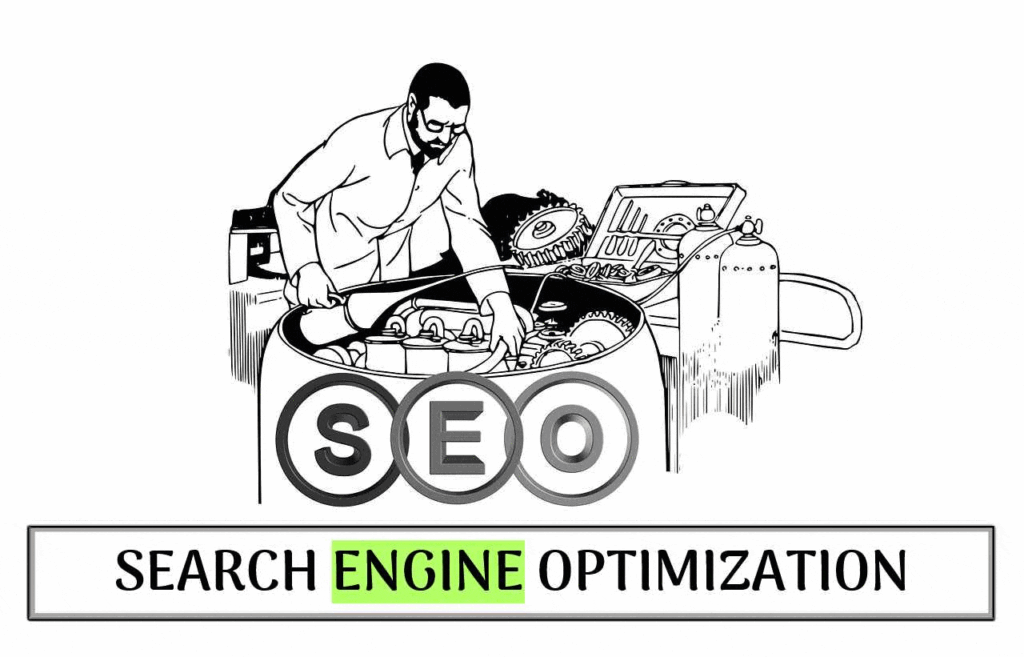Welcome to SEO 2.0! You are no longer limited to search engines like Google. From social media platforms like YouTube, Instagram and TikTok to voice assistants like Alexa and Siri, people are searching in new and diverse ways. This new era is challenging businesses to expand their strategies. Businesses have to ensure that their content appears on every platform and device where their audience is active.

What is SEO?
SEO is the art and science of improving a website’s visibility on search engines like Google, Bing, and Yahoo. For decades, it has been a cornerstone of digital marketing, helping businesses connect with their audiences through organic search results. SEO includes techniques like keyword optimization, content creation, backlink building, and technical tweaks to ensure websites rank well in search engine results pages (SERPs). But in recent years, the scope of SEO has evolved significantly.
SEO Full Form & Meaning
Traditionally, SEO stands for search engine optimization, a process designed to satisfy search engine algorithms. In addition, SEO is also called search engine optimizer, who does search engine optimization. If seen, here are 2 full forms of SEO:
- The full form of SEO is Search Engine Optimization, and
- The full form of SEO is Search Engine Optimizer too.
However, as digital platforms have grown and diversified, SEO has evolved into Search Everywhere Optimization, which emphasizes the need to optimize for a wide range of platforms where users connect and search for information, services, and products. Thus, the third full form of SEO is becoming Search Everywhere Optimization.
Why SEO Now Means Search Everywhere Optimization?
Let’s know the journey of SEO becoming Search Everywhere Optimization (SEO 2.0).
SEO Origin
The concept of SEO dates back to the mid-1990s. This was when search engines like AltaVista and Yahoo first appeared. Early SEO strategies were rudimentary, focusing on keyword stuffing and basic meta-tagging. But in 1998, Google revolutionized search by launching its PageRank algorithm. SEO practices then became more sophisticated, incorporating content relevance, user experience, and authoritative backlinks.
The Beginning of SEO 1.0
By 2002, the term search engine optimization was well established. Search engines were becoming the primary gateway to the internet. Businesses recognized the importance of appearing on the first page of search results. Thus, many SEO companies emerged that made it necessary for businesses to understand and meet the SEO search engine algorithm, which was based on keywords, meta descriptions, and link-building strategies. By 2014-2015, many giants like Facebook, Instagram, Twitter, and YouTube started to gain success. As people started spending more time on these social media platforms, business owners also started advertising and branding on them. The scope of search engine expanded.
COVID-19 – The Rise of SEO 2.0
The COVID-19 pandemic accelerated the digital transformation of businesses and individuals alike. With lockdowns and social distancing measures in place, people turned to the internet for almost everything—shopping, education, entertainment, and work. This surge in online activity highlighted the need for businesses to optimize their presence across multiple platforms. SEO strategies evolved rapidly, incorporating elements like local SEO for businesses offering online delivery, video SEO for educational content, and social media optimization as users flocked to platforms like YouTube, Instagram and TikTok for connection and information. The pandemic served as a catalyst for the broader adoption of Search Everywhere Optimization principles.
The SEO 2.0 in 2025
Looking ahead to 2024 and the future of 2025, the digital marketing is unrecognizable from what it was two decades ago. Social media giants like Facebook, Instagram, and YouTube have become the dominant platforms where users look for information. Add to this the meteoric rise of conversational AI tools like ChatGPT, and it’s clear that people no longer rely solely on traditional search engines.
Today, users search for recipes on YouTube, discover trends on TikTok, look up reviews on Amazon, and seek instant answers from ChatGPT. As a result, search optimization everywhere has emerged as a new paradigm. This reflects the need to optimize content across different platforms, each of which has its own algorithms, user behavior, and content preferences.
Why Search Engine Land and Neil Patel Talk About It
Leading voices in the digital marketing industry, such as Search Engine Land and Neil Patel, have embraced this broader interpretation of SEO. In an insightful article, Search Engine Land highlights how Search Everywhere Optimization aligns with user behavior, stating that “SEO now extends beyond Google to encompass every platform where users search for answers and solutions.”
Neil Patel often discusses how businesses must adapt to this shift. He emphasizes that optimizing for platforms like Instagram, LinkedIn, and even AI-driven tools like ChatGPT is crucial to staying competitive. Patel’s strategies highlight how creating platform-specific content, understanding diverse algorithms, and engaging users in their preferred environments are now essential components of modern SEO.
Conclusion:
The journey of SEO from Search Engine Optimization (SEO 1.0) to Search Everywhere Optimization (SEO 2.0) reflects the dynamic nature of the digital world. As platforms like social media networks and AI-driven tools reshape how people search and consume information, businesses must adopt a holistic approach to optimization. Embracing this change is not just about staying relevant; it’s about thriving in a world where the boundaries of search extend far beyond traditional engines.
For marketers and businesses, the challenge is clear: understand where your audience searches and ensure your presence is optimized on every relevant platform.
The future of SEO Services is everywhere!
Share this blog:


